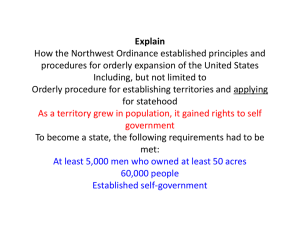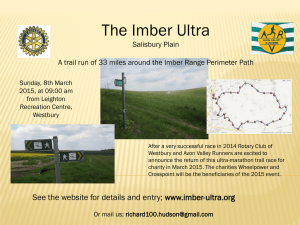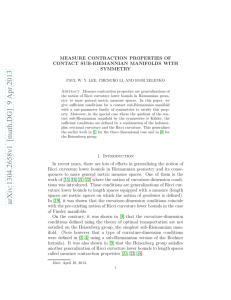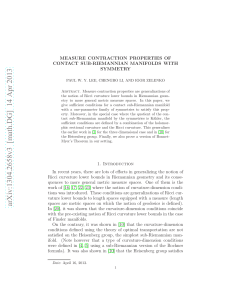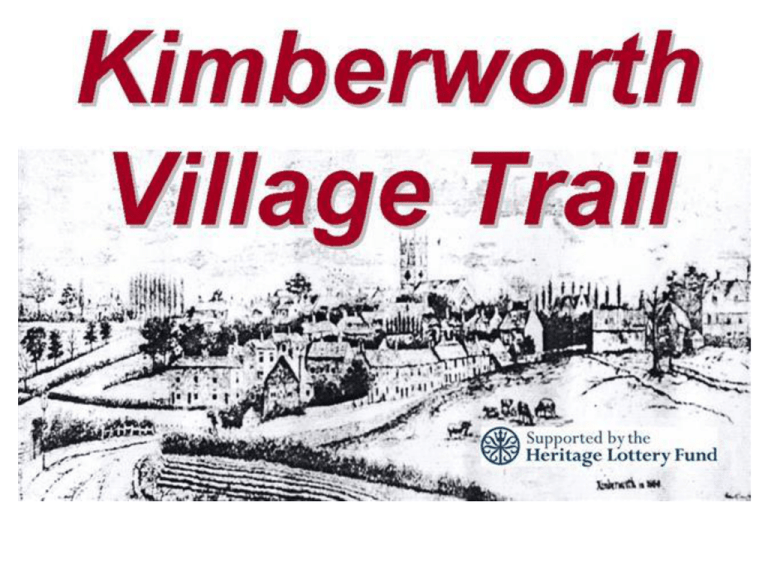
Ariel View
This is the earliest detailed plan of Kimberworth.
It was made in 1854.
It shows us a great deal about the history of the village.
The endowed school mentioned in the other programme is
clearly marked.
The old field patterns around the village show that this was a
farming community, although there are coal mines nearby.
At this stage it is still very much a separate village.
The drawing on the title page shows Kimberworth in 1864.
This shows Kimberworth in 1901. It shows the new Board School.
Although many new houses that had been built since the 1850s it was still a separate village.
This is a list of
the
occupations
that are listed
in a
Rotherham
Directory for
1833 in the
Kimberworth
area.
Goodinson Han. Schoolmistress
Le Tall EmI. bdg. & day school
Lodge Geo. Shopkeeper
Nicholson Mary, victualler, Green
Dragon
Walker Joseph. cart owner
Wood Wm, beer house
Woodcock G. maltster & farmer
Colliery Owners
Barber & Sellars, Blackburn bank
Chambers Robert Joseph & Son,
Holmes
Hague Thos. Thorpe Common
Parker Fras. Bradgate
Walker Joshua and Co.
What does it
tell us?
Blacksmith
HaIl Saml.
Roberts Mttw.
Can you find
any names
that you
recognise?
Shoemakers
Hodson Win.
Taylor Jph.
Tailors
Hirst George
Linton Jph.
Farmers
Deakin John
Barber John
Bray John. 6 Brooke Rd.
Duke John
Fletcher Thos.
FroggattJph.
Hayton Jph.
Kirk Edwin
Kirk Sl. sen.
Kirk Samuel, and butcher
Sellars Wm.
Warns John
Warns Jph.
Wing Wm.
Raybould Jas.
Rodgers Jph.
Woodhead W.
Wheelwrights and Joiners
Lockwood SI.
Oxley Wm.
Fork Makers
Brown Geo.
Barker Jph.
The Kimberworth area is very fortunate in having some
especially important surviving remains from ancient times.
The Roman Ridge.
Everyone has heard of Hadrian’s Wall that was built across the
north of England to keep invaders from coming south but few
people know that a similar line of defence was built by the
Ancient Britons across South Yorkshire to protect them from
attack by the Romans.
Amazingly, sections of this sixteen mile long fortification can
still be traced as it snakes across Kimberworth towards the
Dearne valley. Much of it follows the line of Meadowhall Road.
Back to trail
Kimberworth Castle.
At the time of the Norman Conquest Kimberworth was a
separate manor. It was given by William the Conquerer to a
very powerful knight called Roger de Busli who had many other
manors as well.
The manor extended from the Don and along the Blackburn
rook.
Roger built a a motte and bailey castle at the highest point in
the middle of the manor.
Although most of the castle site has been built over by modern
housing the top of the mound can still be explored. It is
surrounded by the houses on Wilding way and The Motte.
The history of the families of the lords of the manor can be
found at the website www.rotherhamweb.com
Back to trail
Kimberworth Deer Park
In the 1200s the Lords of the Manor of Kimberworth were called the de Viponts.
They created a huge deer park to the north of Kimberworth. Much of the area of
this park is now covered by the Grange Park golf course. It still has some
important areas of ancient woodland.
One of the family was the lady Idonea de Vipont. She
lived all her life in the manor house in Kimberworth until
her death in 1334. You might spot her name around the
area.
Back to trail
The two buildings are completely different in
style.
The older building is quite severe, all in brick
with a symmetrical front, very little
ornamentation and plain windows.
Only the fancy numbering of the date lettering
adds any decorative feature.
The designer of the 1914 building, however, has created
a wonderfully decorative building which is full of interest
to look at.
It is still symmetrical to match the other building but it is
covered with swirls, flower designs and contrasting
colours. The windows are decorated and are divided into
sections by flowing limestone mullions that contrasts with
the red of the brickwork. There is a very elaborate
decoration over the door and two little towers rise above
the level of the roof decorated with flower designs.
This sort of design was very popular at this time. It was
known as ‘art nouveau’. The architect was James Totty of
Rotherham.
This building would be great fun to draw.
See what you can find out about art nouveau
The next four photographs hang at the
back of the church. They were found
when an old store room was being
cleared. The first two show the laying of
the foundation stone of the new church
on Thursday April 17th 1913.
The third picture shows the official
opening being performed by the Mayor
of Rotherham, Alderman P.B. Coward,
on February 5th 1914.
The fourth picture shows the eight men
who administered the affairs of the new
church.
What sort of things do these
photographs tell us about the people
who lived in Kimberworth in the early
20th century?
Back to trail
The Dukes, whose names you can see on the
greengrocers shop in the early pictures of Lockwood’s
Row, were an extensive Kimberworth family. We have
already seen that they were listed in the Directory in
1833.
A number of the Duke children attended the school
and there are a number of headstones in the
churchyard record their deaths. In August 1907 Ethel
Duke was employed as pupil teacher at the infants
school. She was there until 1909.
George and Henry Duke operated the coking ovens
that stood near the ponds where Old Hall school is
now.
There is even a lane called ‘Duke’s Lane’ that goes
down to Droppingwell Lane
This is a very important
building because very
few buildings of this
date survive in South
Yorkshire.
Back to trail
This large Victorian house on Church Street was the
Vicarage.
Back to trail
Sunday School
For many Kimberworth children the various local Sunday Schools
were an important part of their education and social life. These are the
memories of going to the Sunday School at St. Thomas’s by Jean
Green in the 1940s. Jean lived at 28 Meadowhall Road and went to
Kimberworth school.
‘Some of the happiest days of my life were spent in the church hall, but the first
time I went there was when we started at Sunday School. This took place every
Sunday afternoon. Members of the church would teach groups of children according
to their age and sex. As we grew older we were allowed to help with the teaching of
younger pupils. The youngest pupils met in the small rooms in the Old Hall, but
most of the groups met in the new main hall. There were about ten children to a
group and they sat in circles with their teacher. Miss Jolly from the Post Office
taught the older girls in the small room near the stage. Very soon dad became the
superintendent. He sat on the stage at the end of the hall and after the teachers had
finished their lessons everyone joined together for a prayer. There must have been
up to 200 pupils attending during these war years. Everyone had the same lesson
which was taken from a book but each teacher did it in their own way. However
there were so many groups in the hall they had to be quiet so there wasn’t much
scope for doing much more than telling a story and asking a few questions.’
The graveyard that surrounds St. Thomas’s has
many Victorian memorials. Local families are well
represented, and there are familiar names from the
school log books.
Here is a grave of members of the Duke family.
Back to trail
Back to trail
Back to trail
Back to trail
This programme has been
researched and created by Peter
Machan, Sheffield History Desk,
on behalf of
The project has been funded by
the Heritage Lottery Fund.
We would like to acknowledge
the help given by Rotherham
Archives, who provided all the
archive photographs, in
preparing this educational
programme.





